There are more serious and important things than an ankle surgery, especially these days. But, certainly, for those who practice running or trail-running when faced with an operation on their feet or lower limbs, many doubts and questions arise both regarding the operation and subsequent recovery.
I have no idea who might be interested in how much I am going to write, but maybe someone will find some useful ideas, since I am an amateur sportsman and therefore represent the mass in some way.
I have been doing sports since I was 6 and have always used my legs and feet in sports: judo, mountain biking, football, soccer, climbing, basic mountaineering, running, trail-running, ultra trail-running.
Also, before 2022, I had never operated on and never stopped for more than a week, as sport is a daily part of my life.
This year I had to stop for several weeks, following an operation on the external ligament of my right ankle.
My reflection consists of three parts: a first part made up of some necessary premises, a second part made up of some necessary recommendations and then a third part in which I detail the last three months.


PREMISES RELATED TO MY SURGERY
The first premise is that I have chronic instability in my ankles, the result of sprains neglected over the years (from the mid 90s to about 2010), while I was mainly playing football.
The second premise is that this instability was accentuated when I started practicing trail-running and ultra-trail-running, despite having periodically performed specific and adequate physiotherapy treatments. A further crucial event was the rupture of the anterior talar ligament in my left ankle in late June 2015 (which did not prevent me from participating and finishing the TDS two months later, UTMB-TDS 2015 Da un’alba all’altra | EmigranTrailer)
The third premise is that despite these problems, I always managed what I could do based on my physical condition. So, despite having had about twenty severe sprains in the last 7/8 years, I continued to train and compete (more than a hundred, My Trail Running Experience | EmigranTrailer) on rough terrain and over various distances, including those over 100 km. I certainly penalized the performance part (never being able to go as fast as I wanted and could), but I always benefited from it in terms of physical, mental and resilient state. It is certainly a questionable approach. But I don’t regret any of the choices made.
The fourth premise is that the autumn of 2021 put me in front of “mountains” that are very difficult to climb mentally. There have been weeks in which I no longer had the desire and the right concentration to practice sport but above all trail-running. This lack of concentration and desire, led me to run in a distracted way: the body was on the paths, the head and the heart elsewhere. And this is never a good sign. And in fact at the last race in Ibiza (3 DIAS TRAIL IBIZA 2021 | 26, 27 E 28 NOV | CARRIERA DI PUNTEGGIO UTMB | PIÙ DI UNA MARATONA) I damaged the external ligaments of both ankles, taking ugly sprains at a distance of 3 km from each other. And so I’ve since decided to take a break. And to invest the time in other things, including doing this ankle surgery.
The last premise is that I was operated on January 19, 2022 on the external ligament of the right ankle. They inserted a retainer, a titanium clip anchored to the muscle tissue, to make the damaged ligament firmer. In short, it is not a decisive surgery but it is a containment surgery. And in theory, I should have the same operation on my left ankle, which in November was worse than the right and which is the one where I had broken the ligament in 2015, without ever operating it. I still don’t have an agreement with the surgeon on this point because I first want to understand if and how much the right ankle will improve in 2022.


RECOMMENDATIONS BEFORE & AFTER THE SURGERY
The first recommendation I feel I can make is that what I write is purely subjective. It cannot necessarily be extended to everyone. Everyone has their own times, their rhythms, their life problems, and so on. So, if you need to, take a cue, but learn to self-evaluate and not try to repeat what someone else is doing.
The second recommendation is that, if you want to operate, always do it for your exclusive choice, without asking for advice or opinions from friends and acquaintances, but consulting only with those who are specialists (such as an orthopedic surgeon, perhaps of the foot or ankle). Personally, I also avoided too many consultations, because I was already aware of the problem and had already decided for years to have an operation. I was just waiting for the moment that I would decide. Furthermore, I chose with the knowledge that I did not know if I would go back to running, and to run as I wanted. And it is information that I still do not have. But I live it with extreme serenity because it is the result of MY choice. And luckily, I also have other interests in life. In short, learn to take responsibility for yourself and not to blame fate, bad luck and above all other people.
The third recommendation is that, if you want to operate, do it silently, without too many chats or discussions about it, especially between friends and acquaintances. They could confuse you. Personally I did not tell anyone about the date of the operation (except to those who had to accompany me to the hospital and then home) and above all I did not inform most of those people who live every most holy thing in life as a tragedy about the operation. For me it WAS NOT a tragedy to operate, it was not a tragedy not to run for weeks or months, and it was absolutely not a tragedy to be doing anything else in the meantime. Unfortunately, in recent years, between Italy and Germany, I have met too many people who tend to make even small everyday things a tragedy because of their victimhood. Fuck, enjoy the life that offers so many opportunities. And stop wanting to continuously suck positive energy from those who want to live every day of life with a smile. Kindness and availability should never be confused with your “personal” relief valve: for that there are psychologists, psychiatrists, physiotherapists, orthopedists, mental-coaches (they abound now!). Don’t put everything on the shoulders of someone who is kind to you. It’s incorrect. Sorry, but it was an outlet and a necessary clarification: whoever reads and wants to understand me, will understand.
The fourth recommendation is for post-op. Completely ignore those people, acquaintances or friends, who write “how are you?” “How is it going?” and then begin ten seconds later to talk to you about their problems, especially physical ones. Without you asking him/her. They are people who need to feel empathic with you, even if you may be objectively and clinically worse off. They are not really interested in your health. Same goes for those who give you advice, without you asking them. Out of habit, I give advice if it is required. Otherwise, I don’t give them and I don’t want to receive them. In fact, I start from the assumption that we are all aware and responsible for our choices. And that the only ones entitled to give them are experts in the field (like the orthopedic surgeon).
Last recommendation, for the post operation. Don’t set yourself long-distance goals. But don’t overlook the fact that you have goals. THIS IS FUNDAMENTAL. It keeps your head in activity, which is the most important part in a period of physical rest. I am totally against those who say they do not set goals. It’s wrong. Every day I set myself small goals. In the early days they were things like: taking the stairs with crutches, washing without falling into the tub and without getting the medical brace wet, reading a book, writing, studying, working. In the following weeks they were: walking 1 km, 2 km, a city to visit, having a glass of wine in good company, going to the supermarket to shop, and so on. But I have never focused on purely sporting goals. And above all, I have never “looked” with envy at what others were doing. My only reference was MYSELF from the day before or a few hours before.


POST SURGERY – 1st WEEK (19 January – 25 January)
The medical protocol provided for complete immobility of the operated ankle, wearing a medical brace for 24 hours a day, without ever removing it, not even to wash the foot or leg.
I respected the protocol, staying at home all week, working on the PC, reading four books (and ordering more), leafing through a magazine with places to visit in Germany, chatting on video-call with a few trusted friends and family, and always moving around with crutches inside the small apartment.
In a small column, I started writing some goals for the day and for the following weeks.
From a medical point of view, I took painkillers and had the classic injections to avoid the risk of thrombosis, given the immobility of the limb.
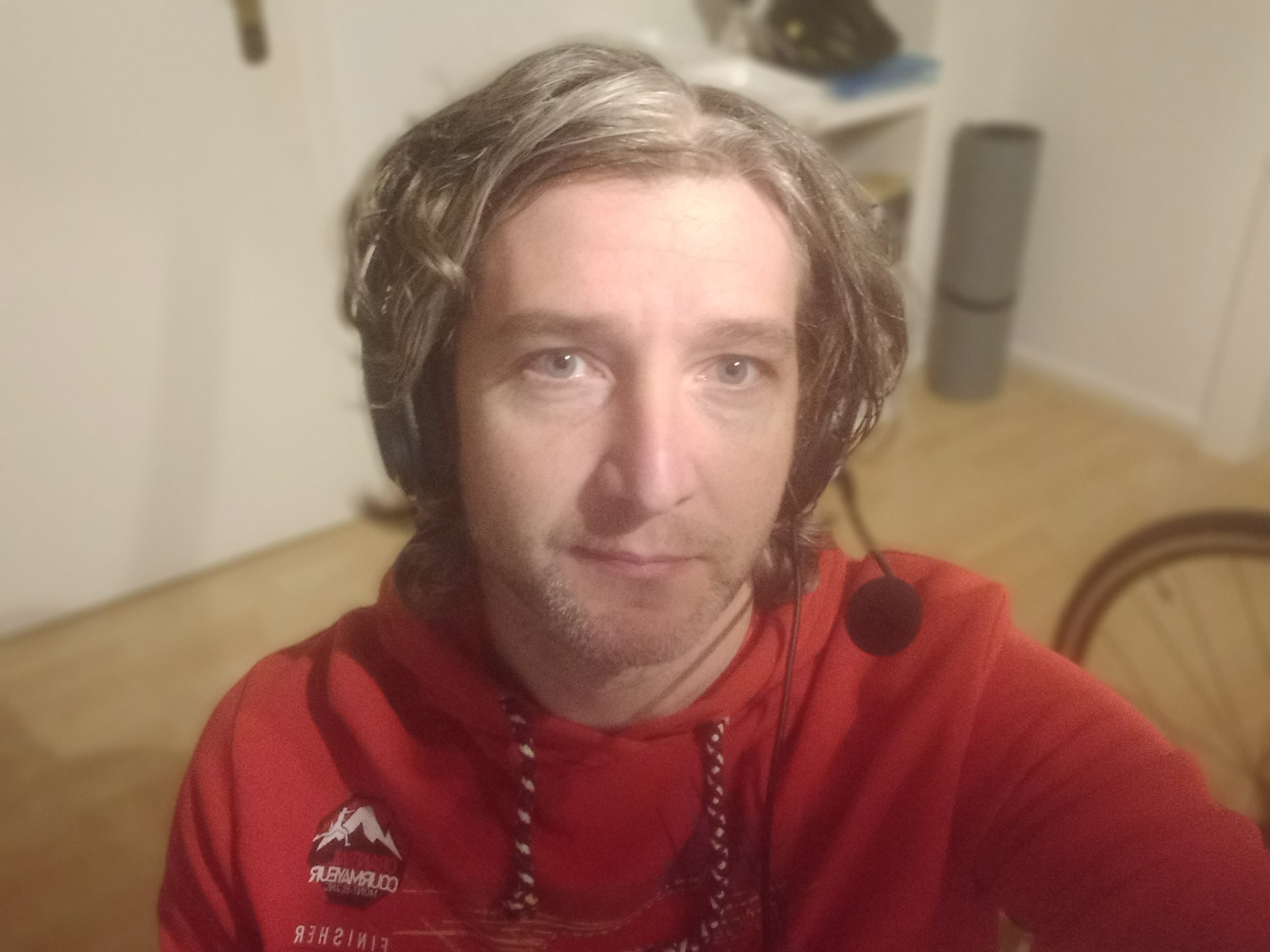

POST SURGERY – 2nd WEEK (26 January – 1 February)
I started to reduce the painkillers and started doing abs exercises while lying down (with the foot on the couch) to reactivate my upper body a little. In addition, during the day I started using an electrostimulator to reactivate the muscles of various parts of the body, from the legs, arms, pectorals and abdominals.
A couple of times I then went up and down on crutches on the stairs to access my apartment.


POST SURGERY – 3rd WEEK (2 February – 8 February)
I stopped taking painkillers and continued with thrombosis shots (three times a day) instead.
I did the first two physiotherapy sessions (20′), in which we simply worked on the physiological reactivation of the foot.
I continued to use electrostimulation and abdominals continuously: about 400 a day.
In agreement with the orthopedist, I did a 25′ test on the bike at home, pedaling with the medical brace. But I noticed that I wasn’t ready yet and decided to wait for another week.
I started taking short walks in the city, always using crutches and never placing the brace on the ground. Obviously, even one kilometer was a great success. And when I was tired I would sit peacefully on a bench or take the bus to go home, where the stairs were waiting for me! It goes without saying that I was not monitoring the mileage at all, but I was looking more at the minutes I could increase before I felt tired. Plus, I always carried a book with me to read.
Also, by choice, I refused anyone to shop for me. I had to deal with it myself, simply because that was a small goal to achieve that would give me further motivation in this recovery phase.


POST SURGERY – 4th WEEK (9 February – 15 February)
I did two tests of about 30′ on the bike at home over the weekend. I did not feel the rush or the need to increase as I was doing everything with extreme serenity.
I continued to use the electrostimulator continuously and to do abdominals: about 200 a day.
It was also the week where I started putting the medical brace on the ground to walk.
I had another physiotherapy session, definitely still very light and mild.


POST SURGERY – 5th WEEK (16 February – 22 February)
During the weekend I did my first long walk (about 2 hours), always with the stiff brace, visiting Cologne.
I continued to work on my abs and increased my city walks.


POST SURGERY – 6th WEEK (23 February – 1 March)
In agreement with the surgeon, I started going to the gym, especially for cycling (without using a rigid brace) and for some stretching and stability exercises, but without putting weight on the ankle.
I did two more physiotherapy sessions, in which we worked on the vertical movement of the ankle. Given the positive outcome, again in agreement with the surgeon, I resumed driving, using a specific anklet while driving, but continuing to use the rigid brace at home or on city walks.
Finally, during the weekend, I took a very easy walk in the woods, always lasting about 2 hours.

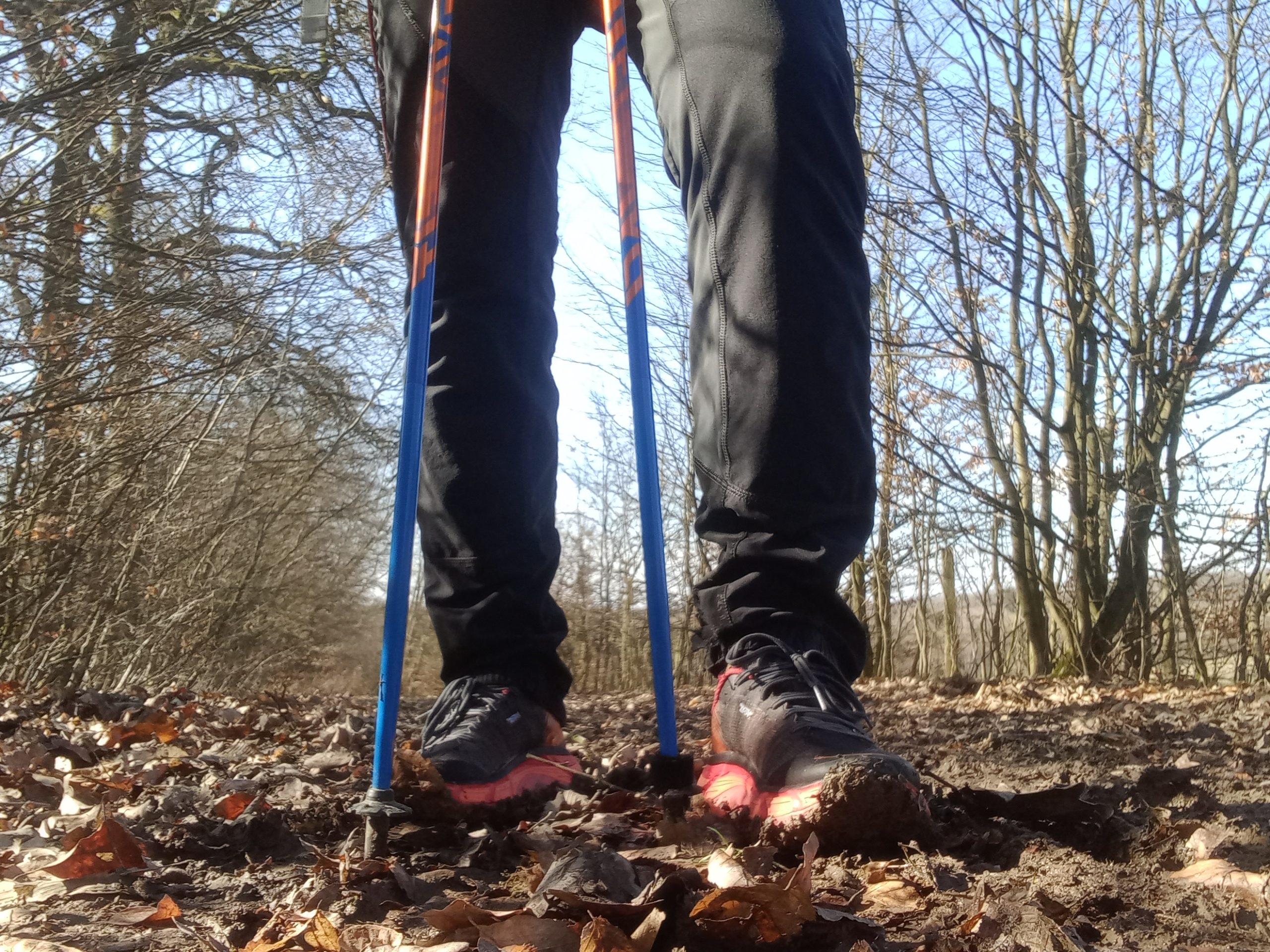
POST SURGERY – 7th WEEK (2 March – 8 March)
I continued to go to the gym, increasing the frequency of the days but not the duration or type of bicycle work (between 30′ and an hour) and exercises.
Over the weekend, I took a test driving two hours from Wiesbaden to Kassel (and then another two hours on the way back), having no particular problems. In between, I walked for about 3 and a half hours in the Kassel mountain park.


POST SURGERY – 8th WEEK (9 March – 15 March)
Very similar week to the previous one in which I did a bike ride in the gym for a total of about 100 km in four sessions, a walk of about 3 hours on slightly more bumpy paths and finally the first outing in MTB of about 1 hour and a half.
For the MTB, the choice was to ride with normal shoes, without a rigid attachment, to obviously avoid problems with the lateral movement of the ankle.
I maintained a weekly physiotherapy session, still working on the vertical movement of the ankle.
For a business trip I then had to drive about 4 hours without any particular problems.


POST SURGERY – 9th WEEK (16 March – 22 March)
Back from the business trip to Munich, with another 5 hours of driving without problems, I concentrated on increasing the kilometers in MTB, going from 100 to 170 km.
I didn’t do any gym work, just someone light at home.
I also included a morning on a very easy via ferrata to test the ankle in these conditions. It was also the first day when I returned to accumulate 1000m of elevation gain in one day.
On a daily basis I no longer used the rigid medical brace, but only the anklet. In the physiotherapy session we also started to move the ankle sideways.
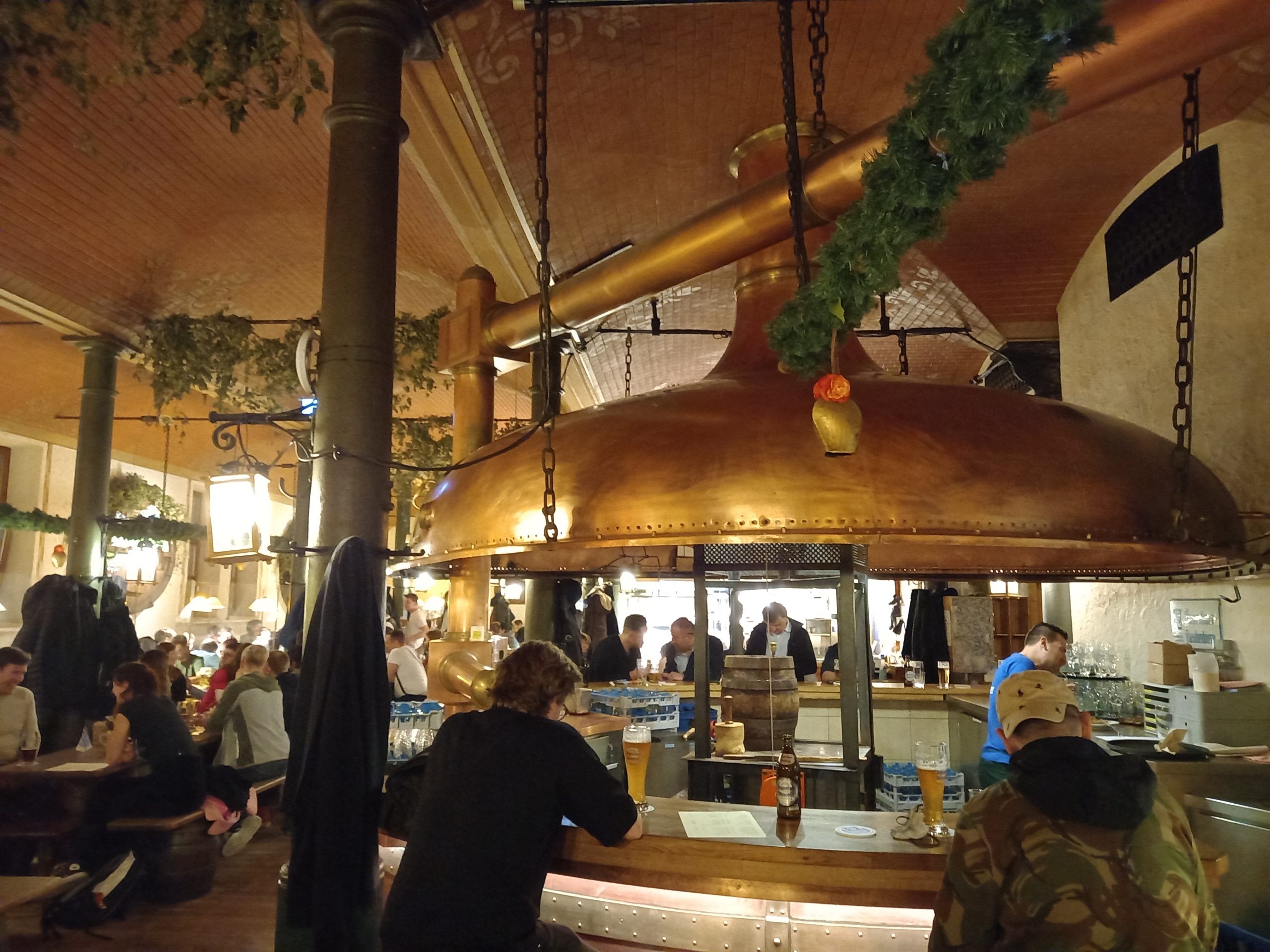
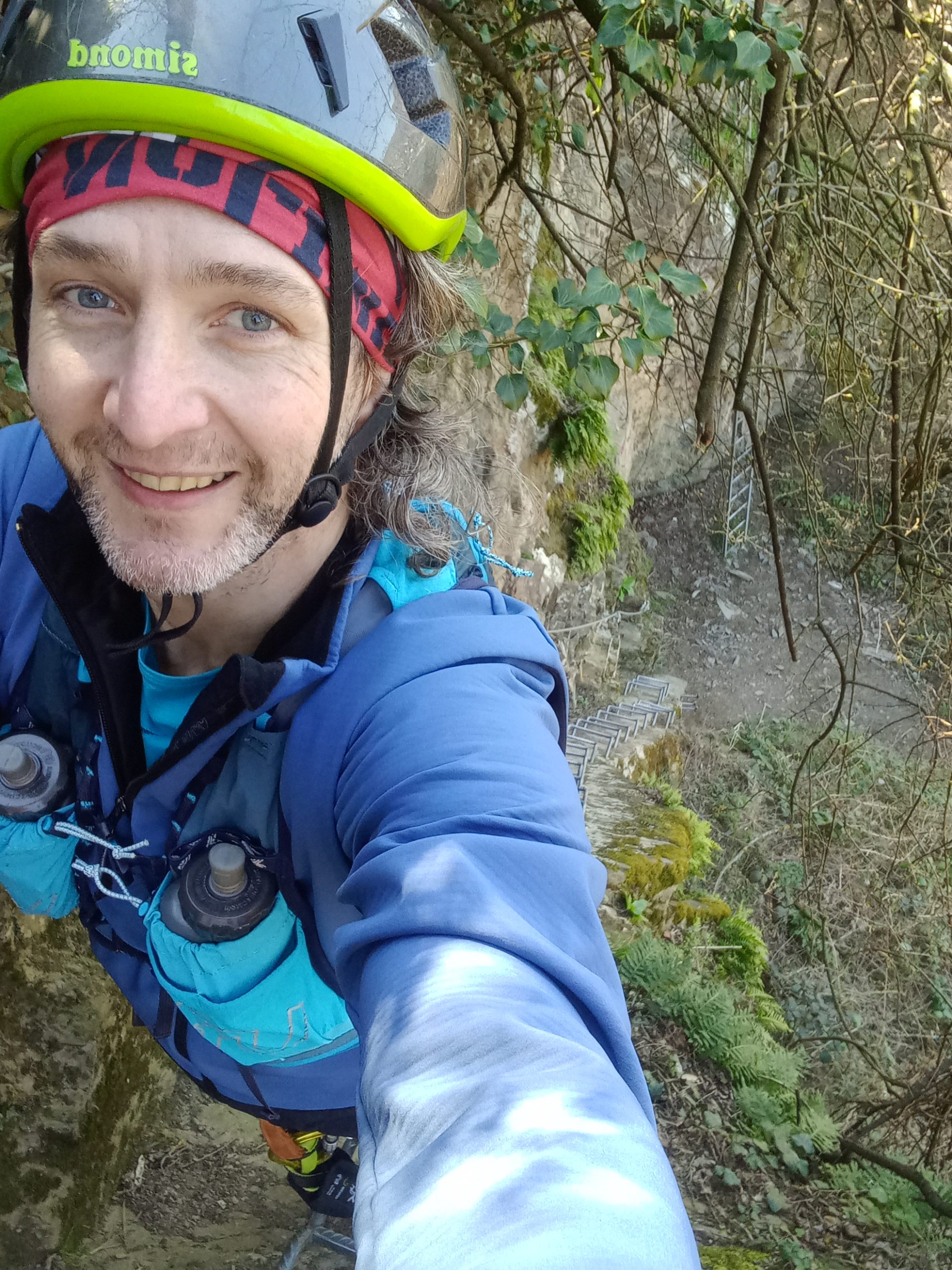
POST SURGERY – 10th WEEK (23 March – 29 March)
I continued with the MTB and with a mileage of around 180 km.
I skipped the gym again, but I did two slightly more demanding physiotherapy sessions, with stability work on the ankle.
Over the weekend I did short climbs and descents on rough terrain. The climbs I made using sticks and climbing at a good pace, just walking, without running. I made the descents walking very slowly.
Despite these attentions, at some point my ankle gave out slightly and bent, causing me a lot of pain.
I didn’t panic and continued the day mountain biking and then healing my ankle in the evening with ice. In the morning everything was already quite in order but I had two days of absolute rest.
Earlier this week I talked to the surgeon (he didn’t kill me!), who checked that everything was in order. He even gave me the go-ahead to start running on easy terrain (athletics track or road) for a few kilometers, gradually.
Despite this, I preferred to wait a few more days.
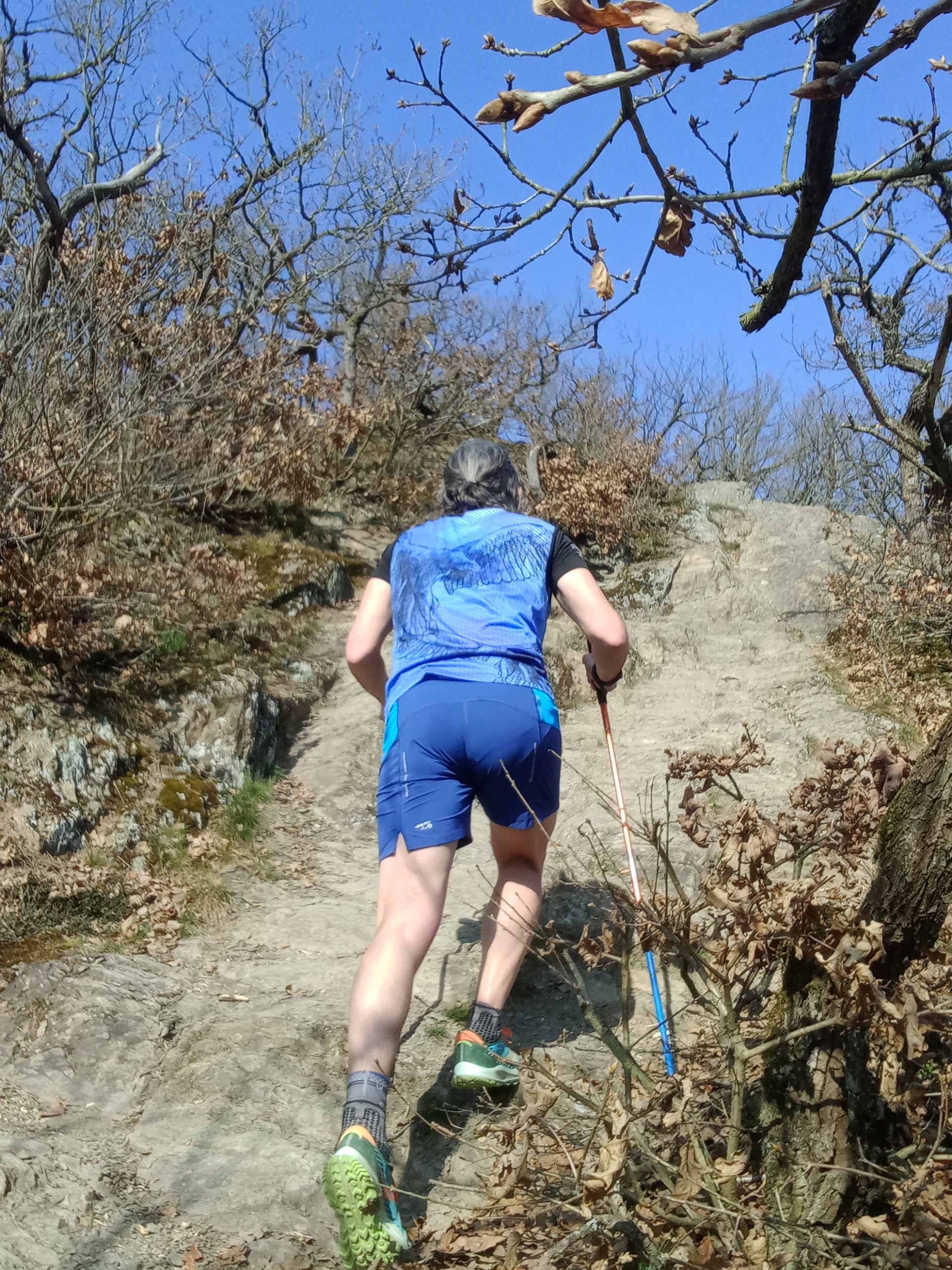

POST SURGERY – 11th WEEK (30 March – 5 April)
In the first few days I did mountain biking and gym again.
I waited to be in the Aosta Valley over the weekend to take the first test run: 10 km at 4’50” / km.
I was surprised with the test as I hadn’t run for several months. Obviously, breath and legs felt it all, but the ankle suffered little. There was obviously some pain.
The next day I went out on trails for about 2 hours, in a very gentle way but still accumulating about 700 m of positive and negative altitude difference.
At the beginning of the following week, I wanted to repeat the test run: 10 km at 4’57” / km. In this second test, the thing I noticed was a beginning of tendonitis as soon as I tried to do hundreds of meters at a pace more familiar to me (between 4’and 4`30 ” / km).
So, I decided that I would focus exclusively on strengthening muscles such as quadriceps and calves, working on the quantity rather than the quality of running or trail running.
This first week in which I resumed running was a total of 38km and about 1100m of gained elevation (between running, trail-running and hiking).


POST SURGERY – 12th WEEK (6 April – 12 April)
Based on the experience of the previous days, I only took walks, hikes and some very gentle runs.
For the race I have never exceeded 13 km as a maximum distance and above all I have never dropped below 6’/ km.
For the hikes, the longest one was about 18 km, using trail-running clothing and especially poles.
Overall I have collected 57 km and about 3800m of altitude difference (between running, trail-running and hiking).
I don’t write that explicitly, but in all these weeks, I was working an average of 9-11 hours a day. Therefore, all the sporting part was done in spare time in the evening, during the lunch break and on weekends.


POST SURGERY – 13th WEEK (13 April – 19 April)
This was instead a week of vacation, and apart from collecting more than two thousand km of North-South-North driving through Italy, which feel on the right ankle, I had planned to dedicate it to a little more trail-running and mileage.
And so it was.
Overall I have collected 80 km and about 3600m of altitude difference, to which then another 17 km and about 1050m of altitude difference must be added on Wednesday 20 April.

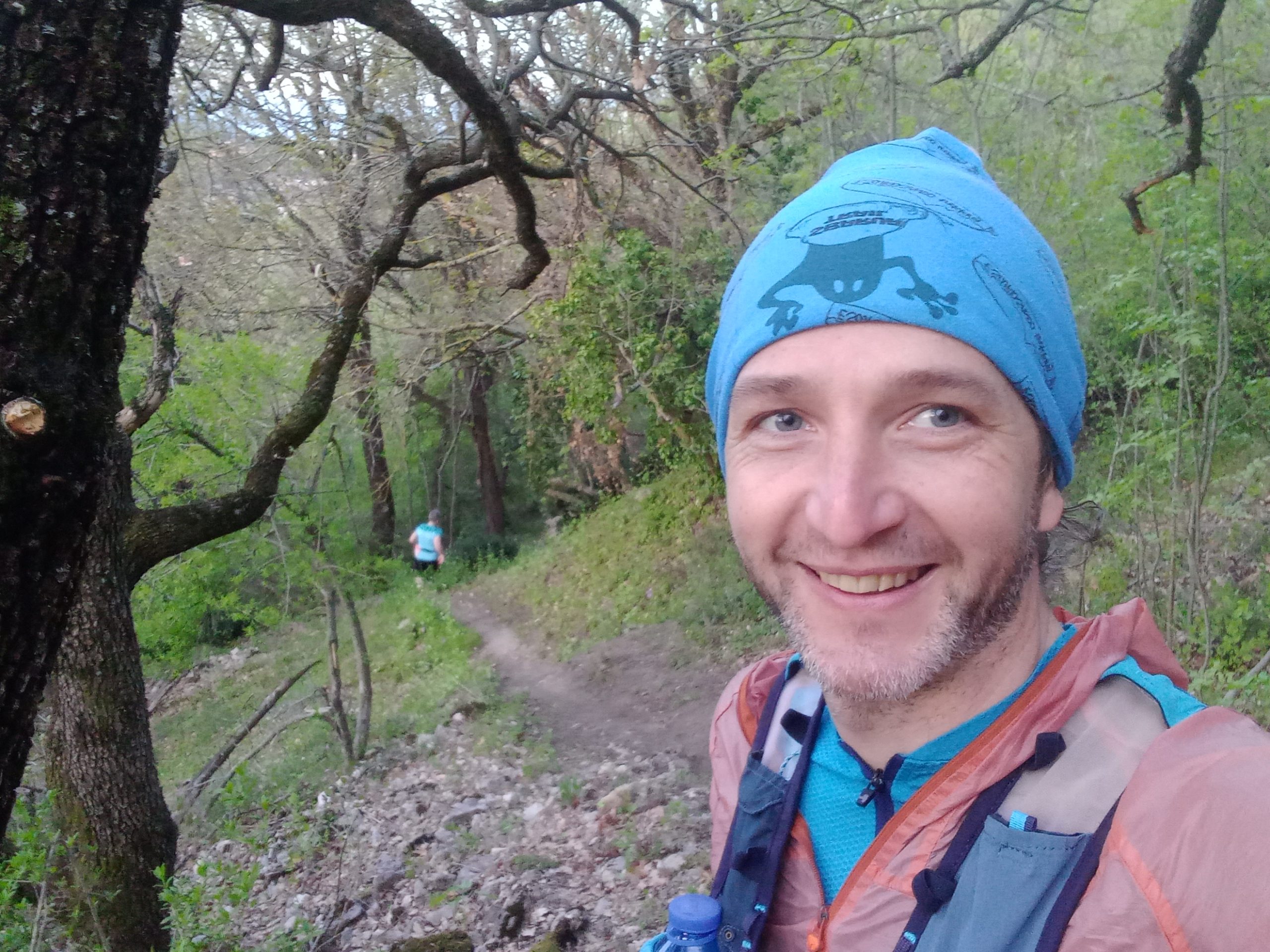
CONCLUSIONS
Summarizing in a few points:
- I waited about 4 weeks after the operation to do a first bike test at home (with rigid medical brace)
- I waited about 5 weeks after the operation to go for a walk (with a rigid medical brace)
- I waited about 11 weeks after the operation to do a first run test (with anklet)
- I have never felt the need to force the times and I have always “listened” to the signals of the body
- I have never been mentally still
The ankle is certainly not yet ready for the mileage, rhythms and altitudes of spring 2021. And it is certainly not ready for the technical, long and steep descents of the trails. It will take many weeks to understand if and to what extent the path undertaken will lead to positive results. I am also aware that I will take other sprains and injuries: I have taken that into account.
In the coming weeks I will continue to work to strengthen the muscles above the ankles, alternating perhaps sessions in the gym, bike sessions, some vertical excursions, and some running on the track or on the road.
Obviously I will resume physiotherapy, combining exercises with elastic and tablet, with targeted massages and free body exercises.
I hope this information can be a useful starting point for those who find themselves in a similar situation.
If there are specific questions, feel free to ask them here or on the various social channels.
Andrea
Post in Italian language at the following link: Operazione alla caviglia: i successivi mesi | EmigranTrailer
Related projects and articles
You might find of interest other articles with hints (always for free :-)) here: Trail Running Tips | EmigranTrailer
Below two examples:



